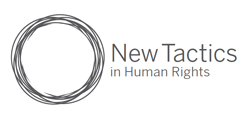Summary Available
Technology is rapidly changing the world around us, offering new ways for human rights defenders to use new tools to their advantage - machine learning is one of them.
Machine learning is a powerful tool that offers tremendous opportunities in the field of human rights. Machine learning can help us detect patterns of corruption to support advocacy, predict poverty to support policy change, and analyzing evidence of human rights violations for transitional justice. However, with these opportunities that machine learning provides, the same technology also raises significant human rights concerns. Algorithmic biases have the potential to completely change the lives of individuals, as well as reinforce and even accelerate existing social and economic inequalities: flawed facial recognition systems, misclassification of videos documenting war crimes as terrorist propaganda, and racist chatbots.
Our goal as human rights defenders is to distinguish between beneficial machine learning systems from harmful automated decision-making processes in order to minimize the risks and maximize the impact of new technologies in human rights work. A few good practices discussed include: fair and transparent machine learning algorithms, and close collaboration and open conversation with experts from these different fields.


